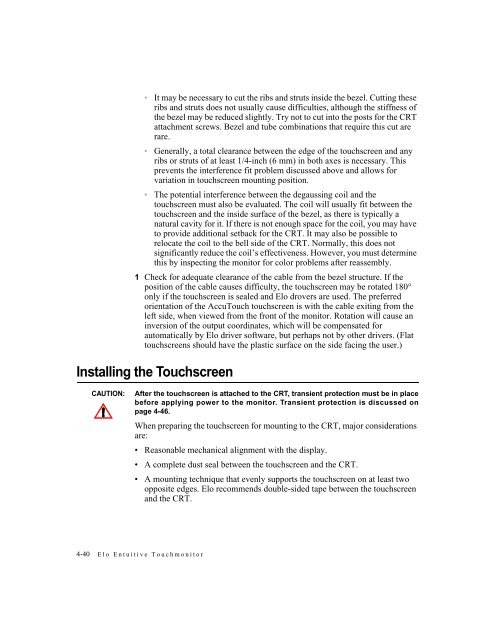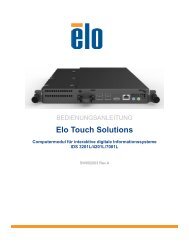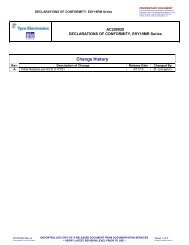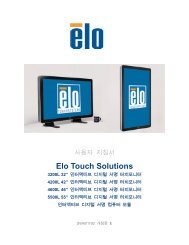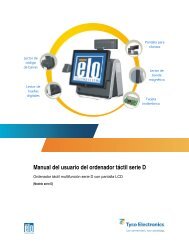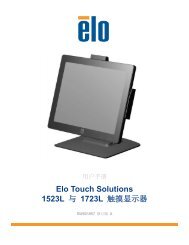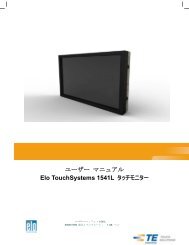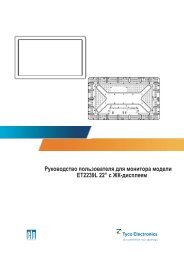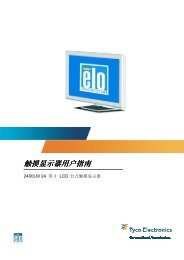AccuTouch Product Guide - Elo TouchSystems
AccuTouch Product Guide - Elo TouchSystems
AccuTouch Product Guide - Elo TouchSystems
You also want an ePaper? Increase the reach of your titles
YUMPU automatically turns print PDFs into web optimized ePapers that Google loves.
4-40 <strong>Elo</strong> Entuitive Touchmonitor<br />
It may be necessary to cut the ribs and struts inside the bezel. Cutting these<br />
ribs and struts does not usually cause difficulties, although the stiffness of<br />
the bezel may be reduced slightly. Try not to cut into the posts for the CRT<br />
attachment screws. Bezel and tube combinations that require this cut are<br />
rare.<br />
Generally, a total clearance between the edge of the touchscreen and any<br />
ribs or struts of at least 1/4-inch (6 mm) in both axes is necessary. This<br />
prevents the interference fit problem discussed above and allows for<br />
variation in touchscreen mounting position.<br />
The potential interference between the degaussing coil and the<br />
touchscreen must also be evaluated. The coil will usually fit between the<br />
touchscreen and the inside surface of the bezel, as there is typically a<br />
natural cavity for it. If there is not enough space for the coil, you may have<br />
to provide additional setback for the CRT. It may also be possible to<br />
relocate the coil to the bell side of the CRT. Normally, this does not<br />
significantly reduce the coil’s effectiveness. However, you must determine<br />
this by inspecting the monitor for color problems after reassembly.<br />
1 Check for adequate clearance of the cable from the bezel structure. If the<br />
position of the cable causes difficulty, the touchscreen may be rotated 180°<br />
only if the touchscreen is sealed and <strong>Elo</strong> drovers are used. The preferred<br />
orientation of the <strong>AccuTouch</strong> touchscreen is with the cable exiting from the<br />
left side, when viewed from the front of the monitor. Rotation will cause an<br />
inversion of the output coordinates, which will be compensated for<br />
automatically by <strong>Elo</strong> driver software, but perhaps not by other drivers. (Flat<br />
touchscreens should have the plastic surface on the side facing the user.)<br />
Installing the Touchscreen<br />
CAUTION: After the touchscreen is attached to the CRT, transient protection must be in place<br />
before applying power to the monitor. Transient protection is discussed on<br />
page 4-46.<br />
When preparing the touchscreen for mounting to the CRT, major considerations<br />
are:<br />
Reasonable mechanical alignment with the display.<br />
A complete dust seal between the touchscreen and the CRT.<br />
A mounting technique that evenly supports the touchscreen on at least two<br />
opposite edges. <strong>Elo</strong> recommends double-sided tape between the touchscreen<br />
and the CRT.


